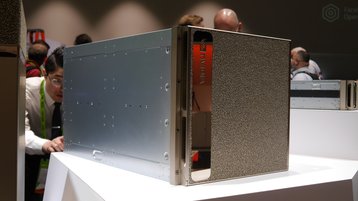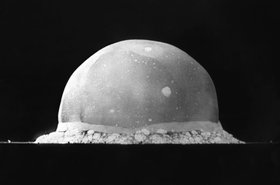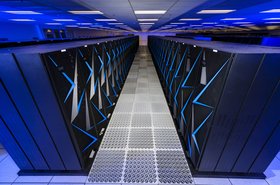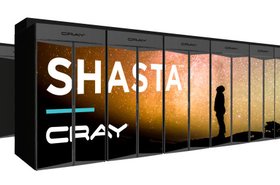Four US national laboratories plan to install Nvidia's DGX-2 systems for scientific workloads.
Featuring 16 V100 GPUs split across two server boards, along with two Intel Xeon Platinum CPUs, 1.5 terabytes of system memory and 30TB of NVMe SSDs, the DGX-2 is capable of two petaflops of deep learning computing power. The 10U, 10kW system is interconnected by Nvidia's interconnect fabric, NVSwitch.
The systems will go to Brookhaven National Laboratory, in Upton, New York; Oak Ridge National Laboratory, in Oak Ridge, Tennessee; Pacific Northwest Laboratory, in Richland, Washington; and Sandia National Laboratories, in Albuquerque, New Mexico.
Supercomputers for all
Brookhaven National Laboratory plans to use its DGX-2 to evaluate several deep learning algorithms for advanced image analysis. Brookhaven’s cryogenic electron microscopy group and National Synchrotron Light Source II facility team also plan to test the performance of machine learning-based streaming, real-time analysis workflows on the new system.
“We want to take HPC workloads that are not machine learning-centric — many of which are employed in Brookhaven’s core high-energy physics and nuclear science research — and conduct performance analyses comparing DGX-2 to our earlier DGX systems,” Nicholas D’Imperio, computational science laboratory chair at Brookhaven’s Computational Science Initiative, said.
“This will provide a better picture of performance gains overall that may improve how we enable legacy codes and HPC workflows to operate on such GPU-dense systems.”
Oak Ridge National Laboratory will use the DGX-2 to improve the fidelity of complex physical processes in weather and climate simulations, and provide a place for small, experimental projects ahead of them being used on Summit, the world's most powerful supercomputer.
ORNL also acquired the DGX-2H, with upgraded CPUs and faster-clocked Tesla V100 GPUs.
“The Nvidia DGX-2 platform allows us to analyze data in unique ways, revealing insights that might otherwise remain hidden,” Jeff Nichols, associate laboratory director for computing and computational sciences at ORNL, said.
“And because its architecture is so similar to Summit’s, the DGX-2 enables the experimentation necessary to ensure that Summit reaches its full potential, particularly in terms of analytics and artificial intelligence.”
Pacific Northwest National Laboratory will model atmospheric phenomena, as well as to improve the precision of whole-body millimeter wave scanning technology.
Sandia National Laboratories hopes for its DGX-2 to serve as the backbone infrastructure for its newly developed Machine Learning as a Service.




